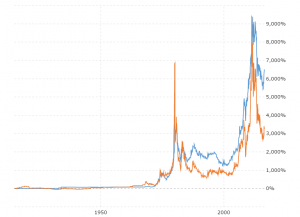Who Designs the Coins for the US Mint?
You may never have heard of Donald Everhart II, but you have probably seen his work. He was a sculptor/engraver at the US Mint, until his retirement at the end of July 2017. His was the last of a series of retirements from this elite group of just five full-time staff, and the last to have the official title of ‘sculptor/engraver’. Although the Mint still lists four people as occupying these posts, in fact they were hired as ‘medallic’ artists and sculptors. Although the hiring freeze imposed by the new President has now been officially lifted, it seems to have continued at the Mint, and no plans to replace the sculptors has been announced.
The most senior artist with the Mint is the Chief Sculptor/Engraver. The last person to hold this post – and there have only been twelve since the Mint was founded in 1972 – was John M. Mercanti, who retired in 2010. The position is a Presidential appointment, and remains vacant at this time.
This band of sculptor/engravers are responsible for both the designs and the making of the dies for the coins produced by the Mint. They work out of the Philadelphia Mint, and all of them have long lists of designs to their credit. Although originally a ‘job for life’, the more recent designers came from backgrounds in design, with Fine Arts training in both drawing and sculpting. Many had worked for private mints, before joining the US Mint.
When a new coin is to be produced, first of all designs are created for the obverse and reverse. Each of these are then turned into a plaster sculpture, about 8 inches across. A rubber mold is taken, and turned into a metal sculpture. Using a machine called a ‘Javier reducing lathe’, over several days a true-sized model is then made. This is hardened, and use to create a small number of master dies by stamping. These masters are then used to make the working dies that create the actual coins.
The quality of the coin, and its desirability to collectors, depends in great part on the design itself. To expand the range of designs, and to bring new ideas into the Mint, a decision to look outside was taken. In 2003 the Mint established its Artistic Infusion Program, often called the AIP. In several ways, including competitions for designs for specific coins, the Mint looked for new designers, from diverse backgrounds, and with wide interests, to bring new ideas for coin images. These are often vetted first by the Citizens Coinage Advisory Committee, who we have described in an earlier blog.
The AIP artists then work with the Mint’s own sculptor/engravers, to finalize the design, and for the engravers to turn them into the plaster sculptures needed to create the dies to produce the coins. As an example, all the designs for the quarters in the America the Beautiful series were created by different AIP artists, and then turned into dies by different sculptor/engravers. Sculpting the pieces calls for an enormous amount of skill and experience, if the resulting coin is to have the clarity and precision loved by collectors.
This elite band of designers and sculptors is a national asset. Their work fills our pockets with everyday circulation coins, and our collections with gold and silver pieces in mint condition. Let’s hope their work continues for a very long time, and keeps US coins in the upper ranks of quality collectibles.

















I have heard that my friend from high school class 1952, Joseph Winters, became an engraver/designer. Do you have any info or conformation of this. Thanks.